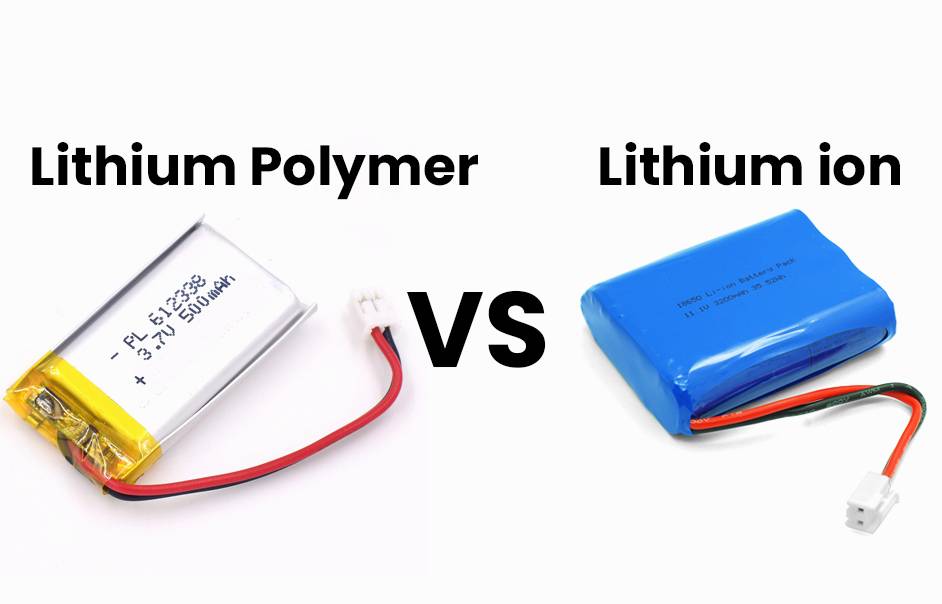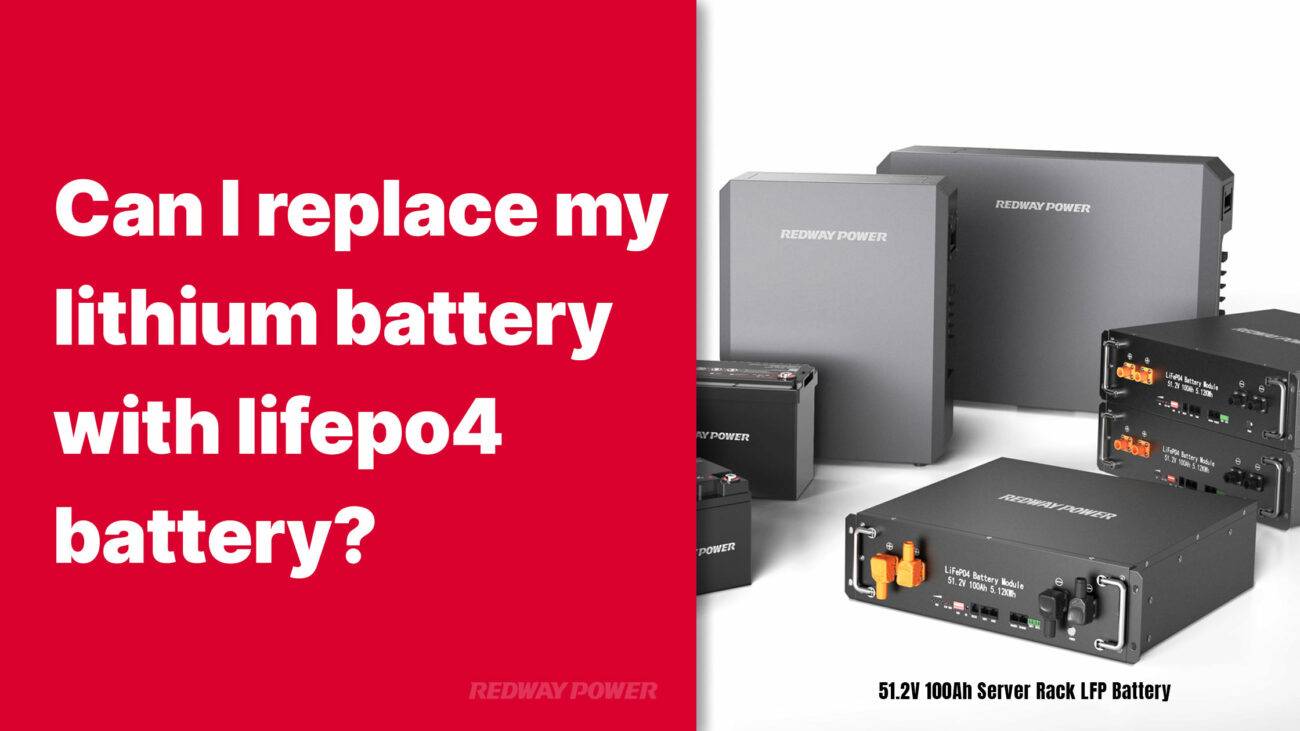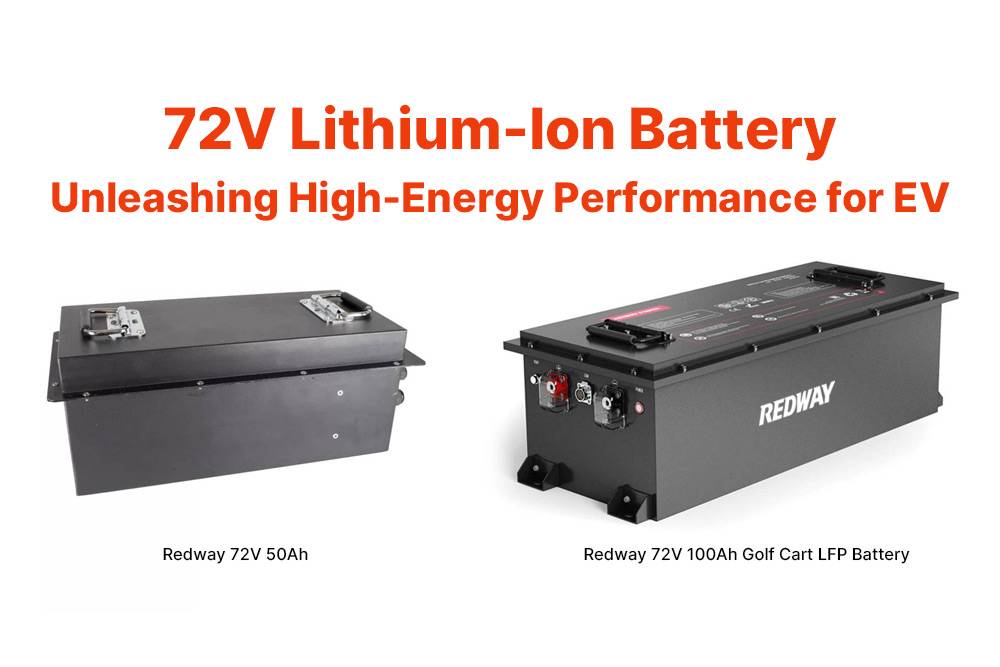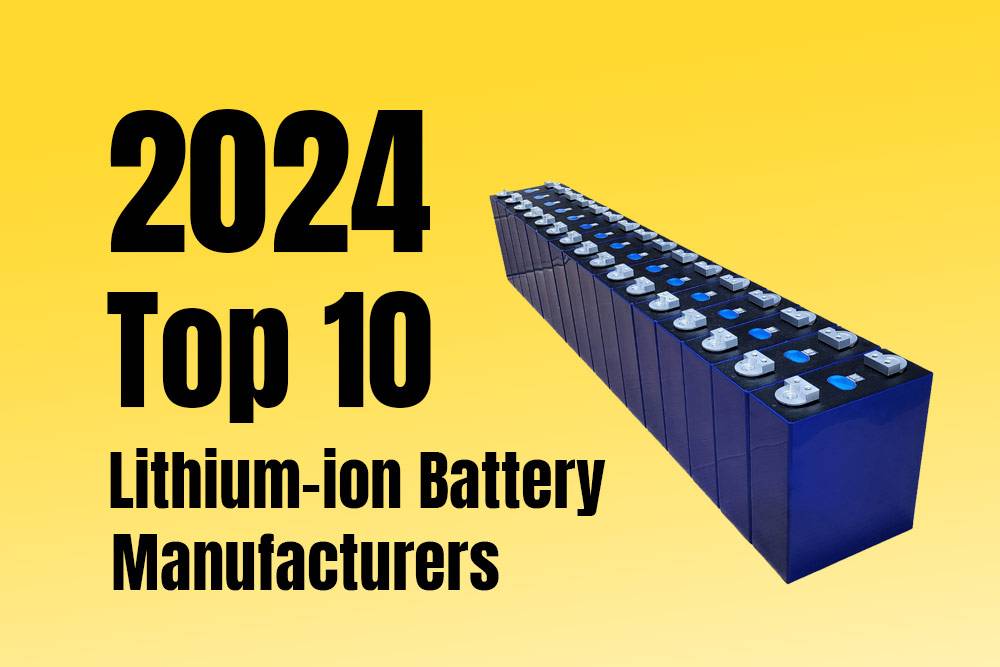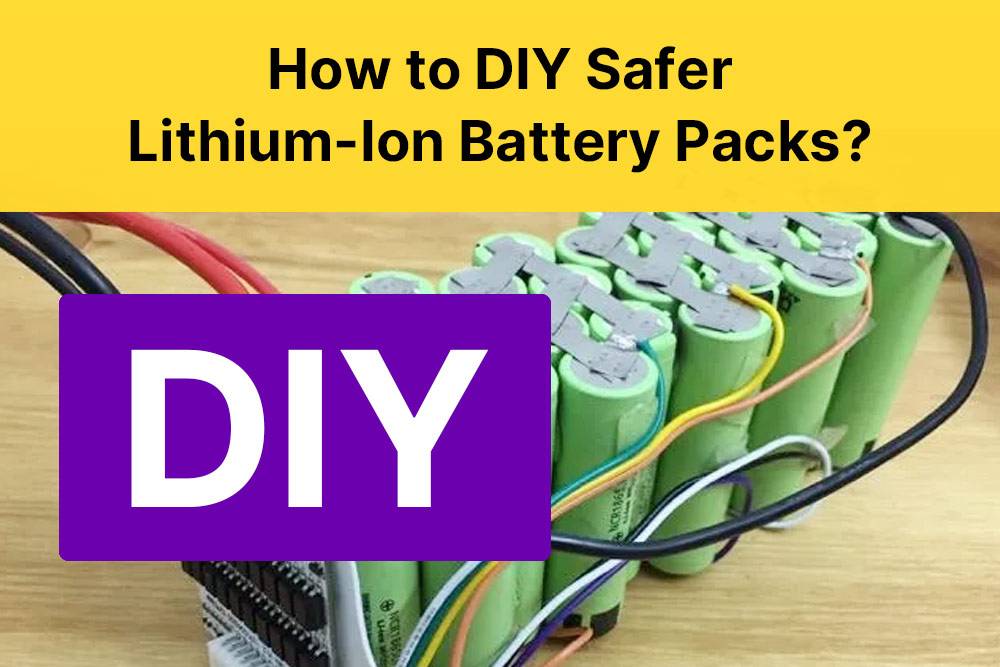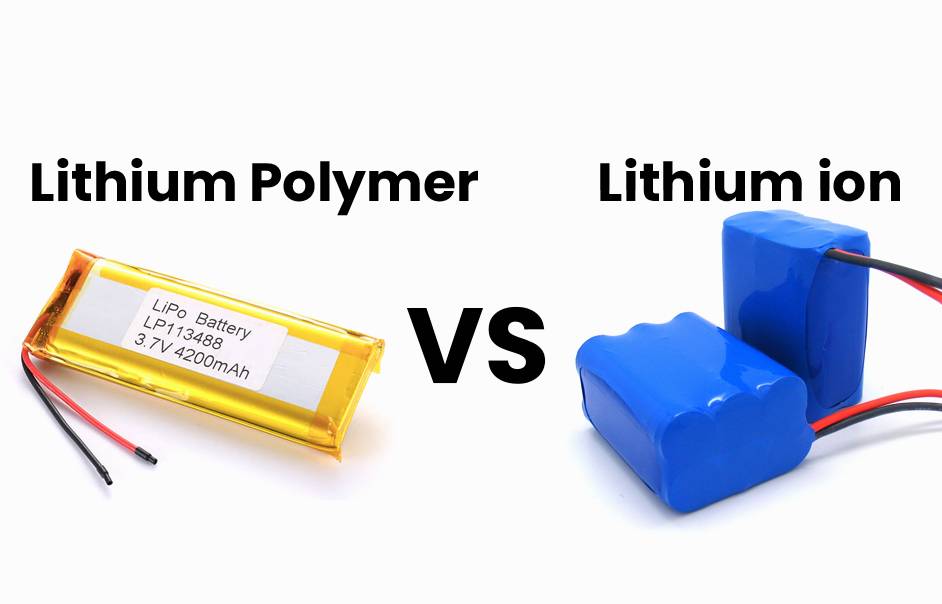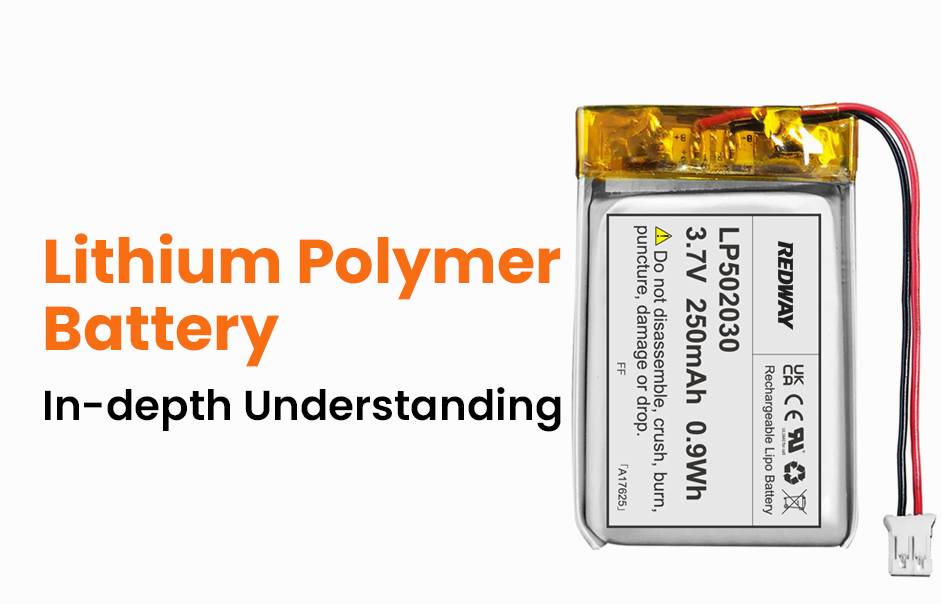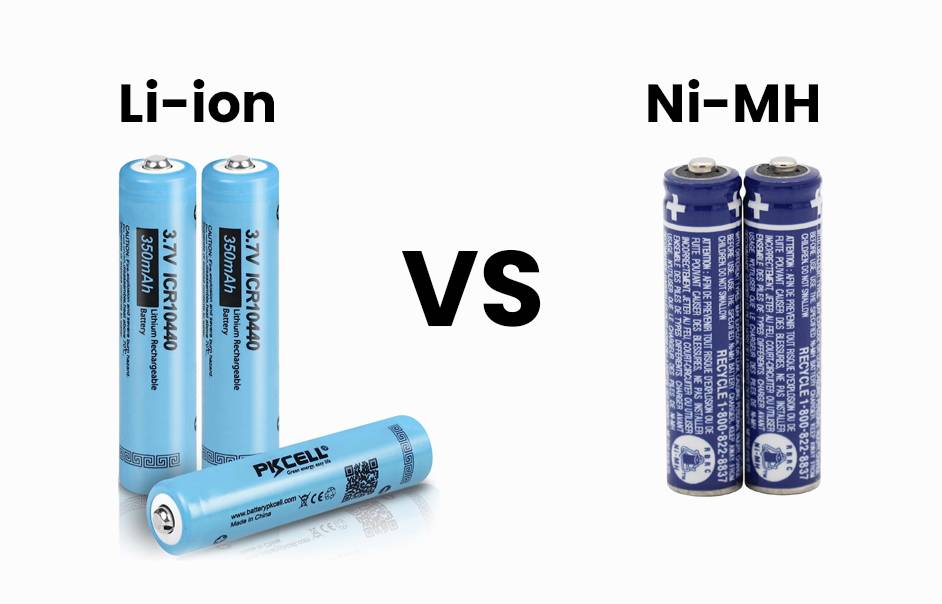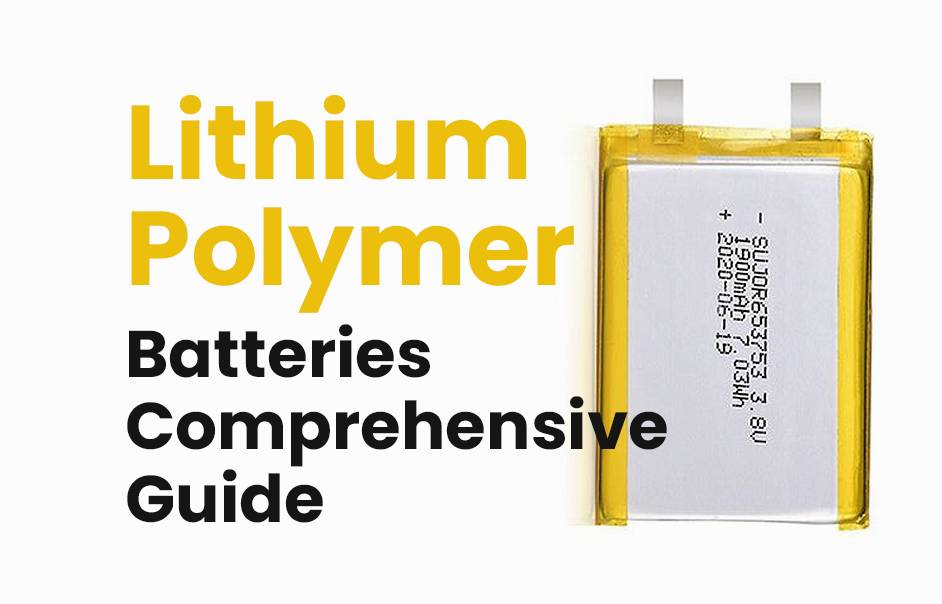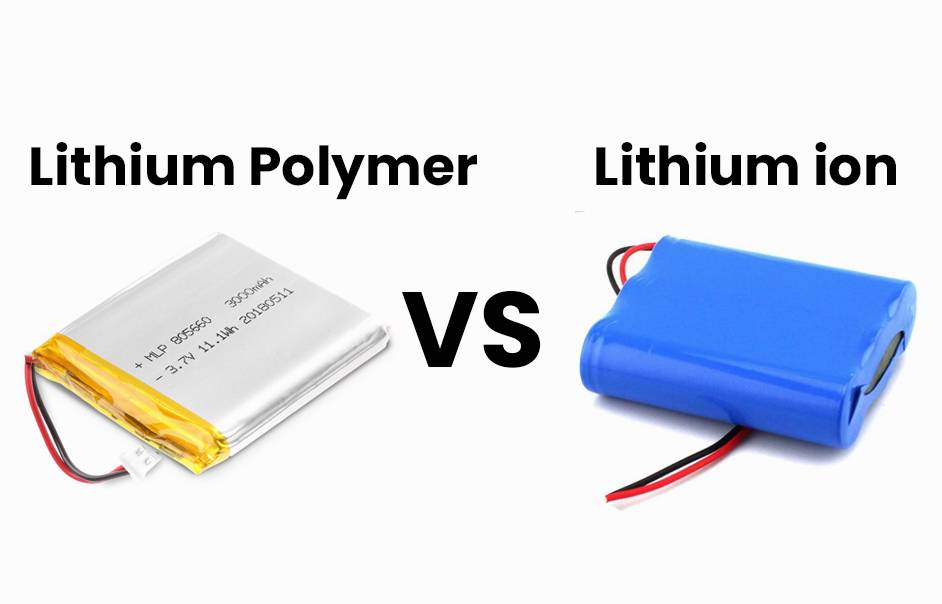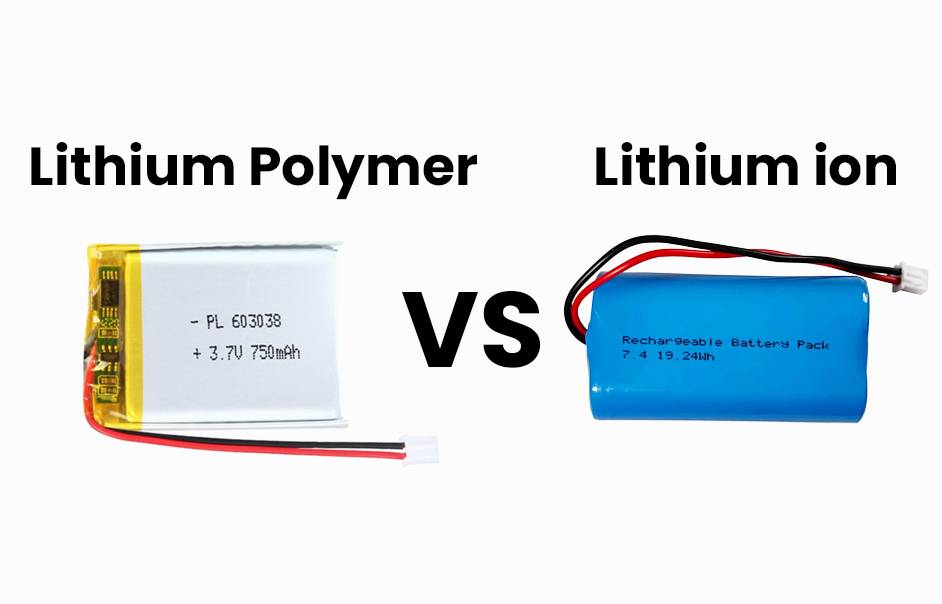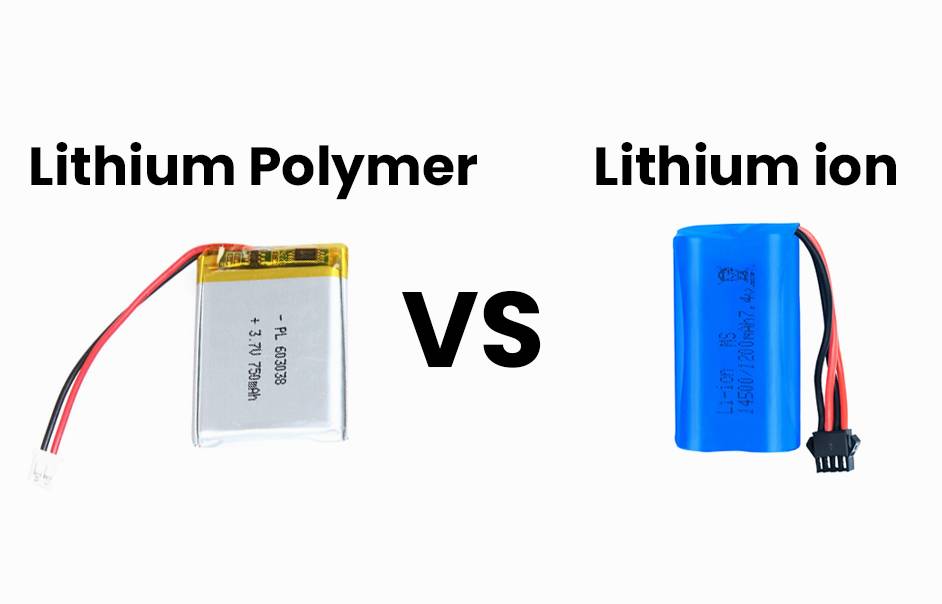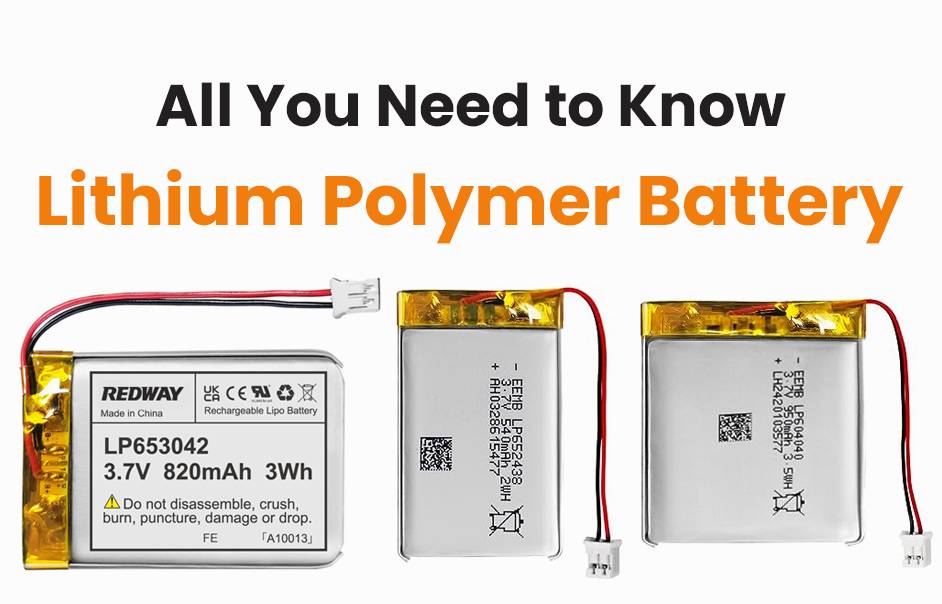Lithium-ion batteries are generally more effective and prevalent than lithium-polymer batteries. They have better energy density and high power capacity, as well as longer average lifespan. The versatility of lithium-ion batteries in terms of size and shape makes them suitable for various applications. Understanding these differences helps in choosing the right battery for specific needs. This guide empowers you to make informed decisions for your devices, exploring differences and applications. Join us for an electrifying exploration into the dynamic realm of battery technology – grab your favorite beverage and dive in!
Lithium Polymer vs Lithium ion Battery, What Are the Differences?
Lithium Polymer (LiPo) batteries offer high capacity and safety, while Lithium-ion (Li-ion) batteries are more energy-dense and cost-effective. LiPo batteries have a longer lifespan, lasting over 1000 cycles. Choosing between LiPo and Li-ion batteries depends on the specific requirements of the application, considering factors such as capacity, energy density, and cost.
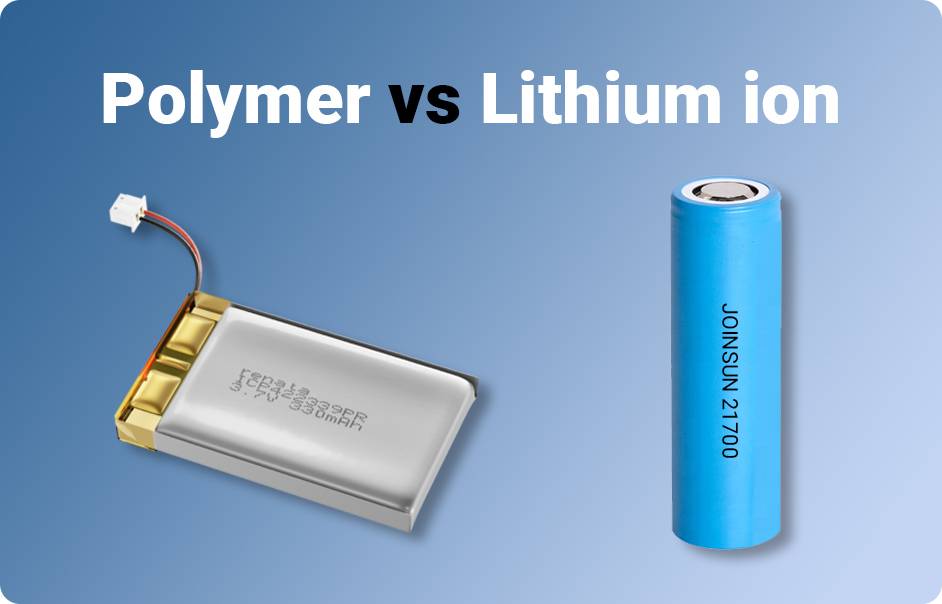
Pros and Cons of Lithium Polymer Batteries
Lithium Polymer (LiPo) batteries offer several advantages, including good safety performance, thin design, lightweight construction, large capacity, small internal resistance, customizable shape, good discharge characteristics, and simple protection plate design. These advantages make LiPo batteries suitable for various applications, providing efficient and reliable power solutions.
Lithium Polymer (LiPo) batteries have some disadvantages to consider. They have a shorter recharge life, typically around 300 to 400 cycles, and can be a fire hazard if the battery is punctured. Additionally, LiPo batteries require special care during charging, discharging, and storage to ensure safety and optimal performance.
- High Energy Density:
- Pro: LiPo batteries boast high energy density, allowing them to store a significant amount of energy in a compact size.
- Application: Ideal for portable devices like smartphones, tablets, and wearables where space is a crucial factor.
- Flexibility in Design:
- Pro: LiPo batteries can be molded into various shapes and sizes, offering flexibility in design for sleek and compact electronic devices.
- Contrast: Unlike traditional cylindrical lithium-ion batteries, LiPos provide manufacturers with design versatility.
- Low Self-Discharge and High Discharge Rate:
- Pro: LiPo batteries exhibit a lower self-discharge rate, retaining charge for longer durations during periods of inactivity.
- Pro: Higher discharge rates enable quick delivery of power when demanded by the device.
- Temperature Sensitivity and Special Handling:
- Con: LiPo batteries are sensitive to high temperatures, posing a risk of thermal runaway or rare instances of explosion.
- Handling Requirement: Special care is needed during charging and storage, requiring specific chargers and never leaving them unattended while charging.
While Lithium Polymer batteries offer notable advantages such as high energy density and design flexibility, it’s crucial to acknowledge their sensitivity to high temperatures and the necessity for proper handling during charging. Understanding these factors is vital in determining the suitability of LiPo batteries for your specific device or application.
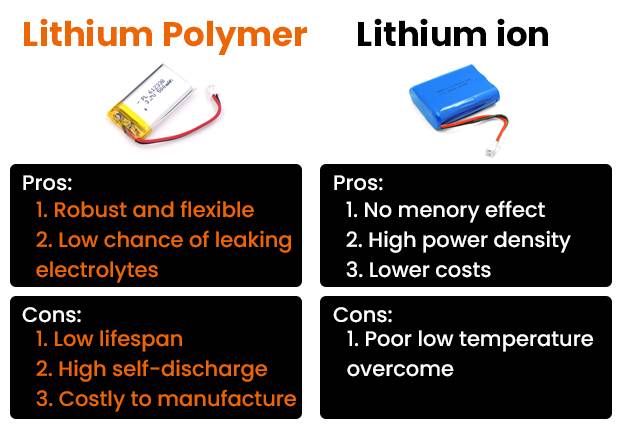
Pros and Cons of Lithium Ion Batteries
Lithium-ion batteries offer several advantages, including safety, lightweight construction, drop-in replacement capability, long lifespan, more usable capacity, constant power delivery, temperature tolerance, and fast and safe charging. These benefits make lithium-ion batteries a reliable and efficient choice for various applications, ensuring optimal performance and longevity.
The cons of lithium-ion batteries include a relatively higher cost, slightly heavier weight, repair and maintenance challenges, and safety concerns related to issues like thermal runaway and fire risk. Understanding these disadvantages is important for making informed decisions about the use of lithium-ion batteries in various applications.
- Compact and Lightweight:
- Pro: Lithium-ion batteries are known for their compact size and lightweight nature.
- Application: Ideal for powering portable electronic devices like smartphones, laptops, and tablets, allowing for greater design flexibility.
- High Energy Density:
- Pro: Lithium-ion batteries exhibit high energy density, storing a significant amount of energy relative to their size.
- Benefit: Enables devices to operate for extended periods without frequent recharging.
- Low Self-Discharge Rate:
- Pro: Lithium-ion batteries have a relatively low self-discharge rate, making them convenient for intermittent or backup power needs.
- Convenience: Retains charge for extended periods when not in use.
- Safety Concerns and Lifespan:
- Con: Safety is a major concern as lithium-ion batteries can overheat or catch fire in rare cases, emphasizing the need for careful handling.
- Con: Despite a long lifespan compared to other rechargeable batteries, lithium-ion batteries degrade over time and require eventual replacement.
- Cost Consideration:
- Note: While the initial cost of lithium-ion batteries may be higher, advancements in technology have been contributing to a decreasing cost over time.
Lithium-ion batteries offer compact size, high energy density, and a relatively low self-discharge rate, making them ideal for numerous applications. However, careful handling is essential due to safety concerns, and users should be prepared for eventual replacement as the battery degrades over its lifespan.
Lithium Polymer vs Lithium ion Battery, Which Battery Is Best for Your Device?
Choosing between Lithium Polymer and Lithium Ion batteries for your device? Lithium Ion batteries last longer and cost less, ideal for power-hungry devices. Lithium Polymer batteries are safer and more flexible in design, perfect for slim devices. Decide based on your device’s power needs and design.
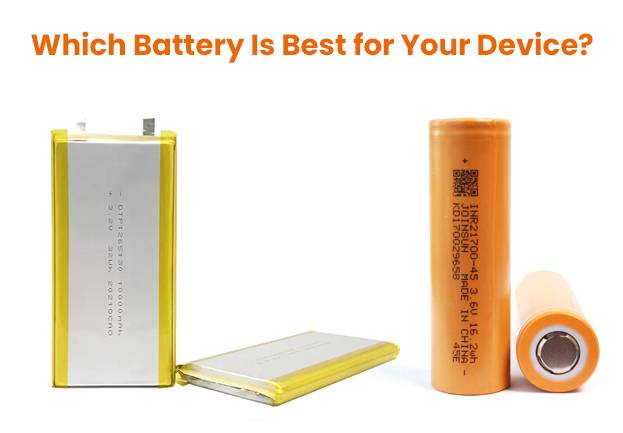
- Power Needs: If your device uses a lot of power or you use it a lot without recharging, a Lithium Ion battery is usually better because it can store more power and lasts longer.
- Design Needs: For devices like ultra-thin laptops or wearable technology, Lithium Polymer batteries are best because they can be made in different shapes and sizes.
- Safety and Cost: Lithium Polymer batteries are less likely to leak harmful chemicals if they’re damaged, making them safer. However, they can be more expensive than Lithium Ion batteries, which are more commonly used and generally cheaper.
Think about what’s most important for your device—whether it’s battery life, safety, cost, or flexibility in design. This will help you pick the perfect battery type, ensuring your device works just right for your needs!
Safety Considerations for Lithium Polymer or Lithium ion Battery
To ensure safety when using lithium polymer (LiPo) or lithium-ion batteries, follow these precautions: charge LiPo batteries on non-flammable surfaces, avoid charging near exits, and never leave a charging LiPo battery unattended. Additionally, follow manufacturer guidelines, store and transport batteries properly, and avoid over-discharging or puncturing the battery. These safety considerations help prevent accidents and ensure safe usage of LiPo or lithium-ion batteries.
Which one is safer, Lithium-Ion or Lithium Polymer batteries?
How do Lithium Polymer Batteries operate?
Lithium Polymer (LiPo) batteries are lightweight, flexible batteries used in many electronic devices. They have electrodes and a gel-like substance inside, which helps them store and release energy efficiently. This makes them ideal for use in smartphones and other portable gadgets.
- Construction: LiPo batteries contain a special gel-like material instead of liquid. This material allows them to be flexible and slim.
- Operation: When you charge your device, lithium ions travel from one side of the battery to the other. This stores energy that you use later to play games, send texts, or watch videos.
- Advantages: These batteries are not only slim but also quite safe. They are less likely to leak chemicals than traditional batteries.
So next time you’re using your mobile phone or any portable device, remember it might be powered by a LiPo battery! These batteries help make our gadgets lighter and more versatile, making our daily tasks easier and more enjoyable.
How do Lithium-Ion Batteries operate?
Lithium-Ion batteries work by moving lithium ions between a positive electrode and a negative electrode through a liquid called an electrolyte. This process creates electricity to power devices, with the ions moving back when charging.
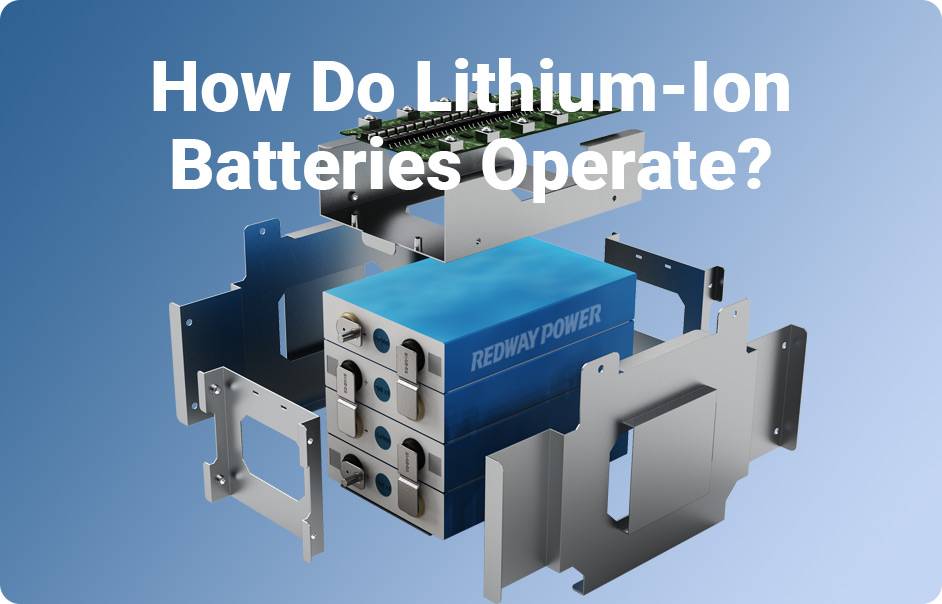
- How It Works: The battery uses lithium ions, tiny charged particles, that move back and forth between electrodes (the battery’s positive and negative sides) to generate electricity.
- Charging Up: When you plug in your battery, you’re sending the ions back to the starting point, preparing them to do the job again.
- Why This Shape?: The liquid that carries the ions, known as an electrolyte, needs to be safely contained, which is why these batteries are usually rectangular.
Every time you recharge your battery, think of it as resetting a mini electrical circuit inside it, ready to power your device all over again. This amazing technology keeps our gadgets running day and night!
Conclusion: Choosing the Right Battery for Your Needs
Choosing between lithium polymer (LiPo) and lithium-ion (Li-ion) batteries is a critical decision impacting device performance and longevity. LiPo batteries offer a lightweight, flexible design ideal for slim devices but may be prone to swelling. Li-ion batteries provide high energy storage and stable performance, commonly found in laptops and electric vehicles. Safety practices are crucial for both. The best choice depends on specific device needs, considering factors like size, weight, and intended applications.
FAQs
Which is better: lithium-ion or lithium polymer?
Is charging Li-ion better than LiPo?
Can I replace a lithium-ion battery with a lithium polymer?
How long do lithium-polymer batteries last?
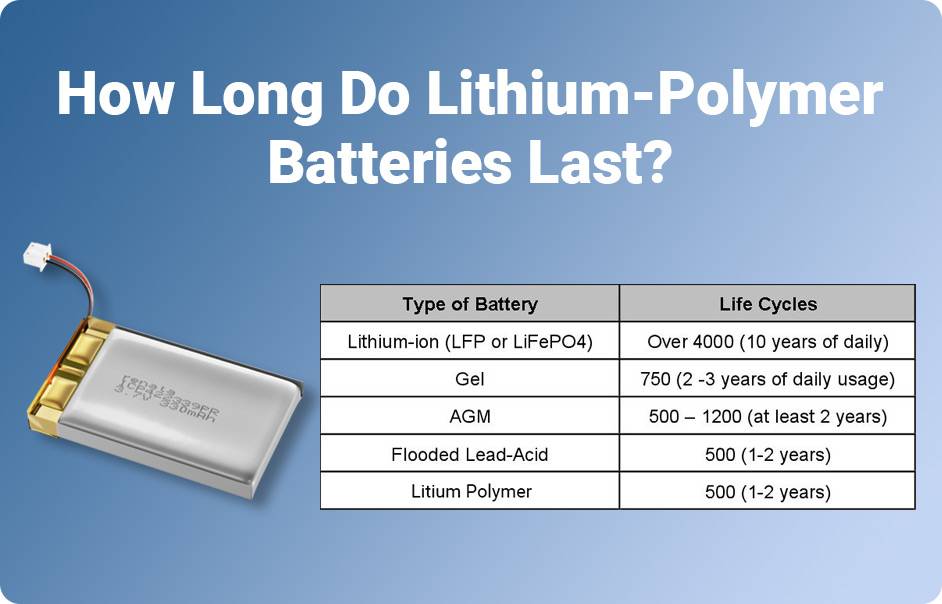
What are the disadvantages of lithium-polymer batteries?
What lasts longer: lithium-ion or lithium polymer?
Can I charge a lithium polymer battery with a lithium ion charger?
Which is better: LiFePO4 vs. LiPo?
LiFePO4 batteries are safer and last longer than LiPo batteries, making them good for devices that need reliable, long-term power. LiPo batteries are lighter and can be shaped differently, ideal for portable electronics but less safe under stress.
- Safety First: LiFePO4 batteries are super safe. They don’t get too hot or catch fire easily, which makes them great for bigger devices that you use a lot.
- Power for Longer: These batteries also last longer on a single charge and over their whole life. That means fewer battery changes and better for your wallet and the planet.
- Light and Flexible: LiPo batteries are the go-to for anything that needs to be light or uniquely shaped, like drones or wearable devices. They fit into all sorts of spaces, making them super versatile.

